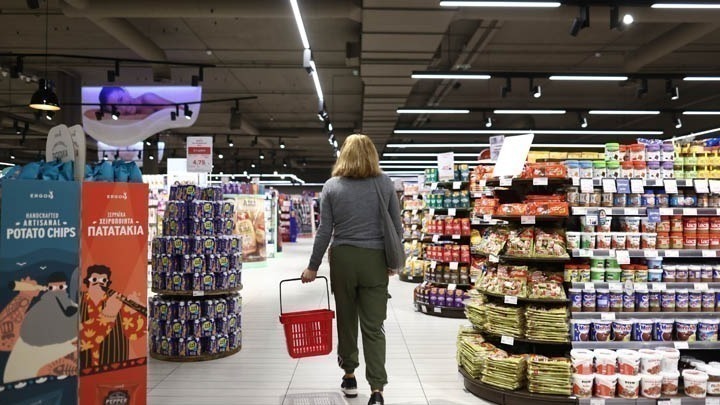
Food spending and consumption in Greece have shown significant changes in the last decade, according to a study by the Institute for Research on Consumer Goods Retailing (IELKA).
Greek consumers raised their spending on basic carbohydrates such as bread by twelve percent and drastically lowered that on dairy products such as milk (thirty percent) and vegetables (forty-three percent) from 2009 to 2022.
According to the study, which only examines shopping for food in comparison to eating out at a restaurant, for example, the per capita expenditure on food from 2009 to 2022 dropped by 5.8 percent at 1,825 euros in 2022 compared to 2009, the year before the start of the first fiscal crisis in Greece.
The overall household food expenditure for the same period rose by 3.1 percent. IELKA attributed this to price rises and a reduction in the volume of items shopped. Based on this data, it assessed that the total spending by Greek householders for food in 2022 was 20.28 billion euros (compared to 22.10 billion in 2009).
Changes in food spending in Greece
Other examples of changes in spending from 2009 to 2022 were the following:
– Bread and bread products, spending rose by 12 percent
– Protein sources, an 18 percent drop in spending for beef, and a 40 percent drop for sheep and goat meat
– Olive oil, a drop in spending by 17 percent
– Fruit and vegetables, a 7 percent drop in spending for the former and 43 percent for the latter
– Legumes and nuts, a 44 percent rise in spending for the former and a rise of 48 percent in the latter
– Drinks: spending for non-alcohol beverages dropped 9 percent but for alcoholic beverages, it rose by 68 percent
Besides annual changes, the report also provided the average monthly consumption of certain food categories from 2009. Specifically:
– Bread and bread product consumption dropped nearly 6 percent to 4 kilos per month
– Red meat consumption dropped nearly 16 percent per month (to 1 kg less), except for chicken (a rise)
– Plant protein and legumes in particular also registered a rise in consumption per month
– Fresh milk consumption per month dropped by 41 percent (except for low-fat milk), there was no drop in egg consumption, and olive oil consumption per month dropped to 30 percent.
Fresh fruit and vegetable consumption also dropped, which IELKA attributed to wasteful spending in the 2000s decade.
In addition, non-alcoholic beverage consumption dropped by 1 lt per capita per month; alcoholic beverage consumption rose per month, but this reflected a preference for consumption at home rather than venues outside.
The greatest hikes in average prices paid by consumers in 2022 compared to 2009 were registered in nuts (61 percent), lettuce (64 percent), and coffee (54 percent). The greatest drops in average prices paid were in milk with a long shelf life (-18 percent), sparkling water (-30 percent), and chicken (-4 percent).
IELKA also noted a drop in the purchasing of households in rural areas directly from farmers, except for specific products such as olive oil.
See all the latest news from Greece and the world at Greekreporter.com. Contact our newsroom to report an update or send your story, photos and videos. Follow GR on Google News and subscribe here to our daily email!



